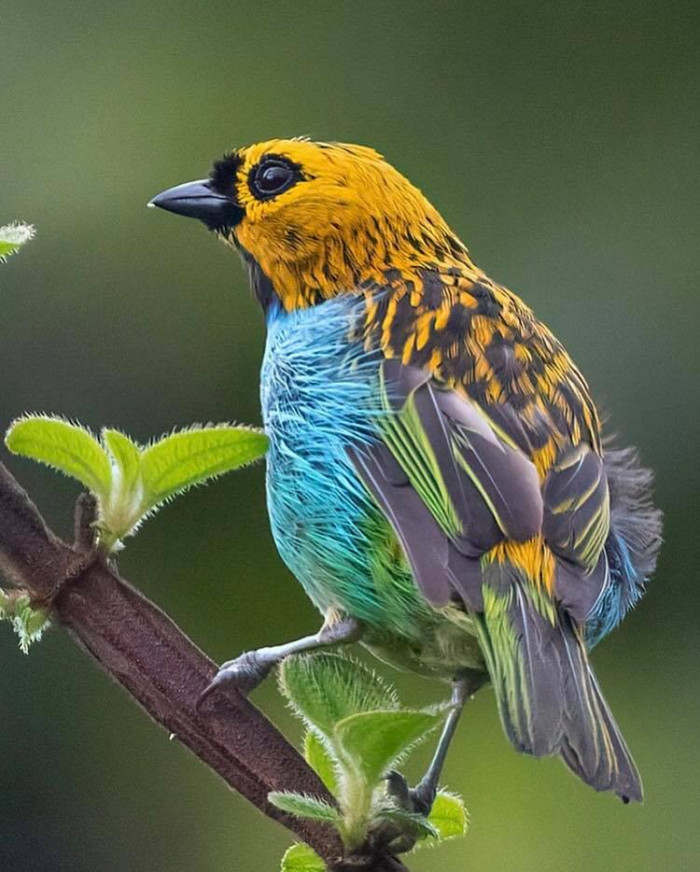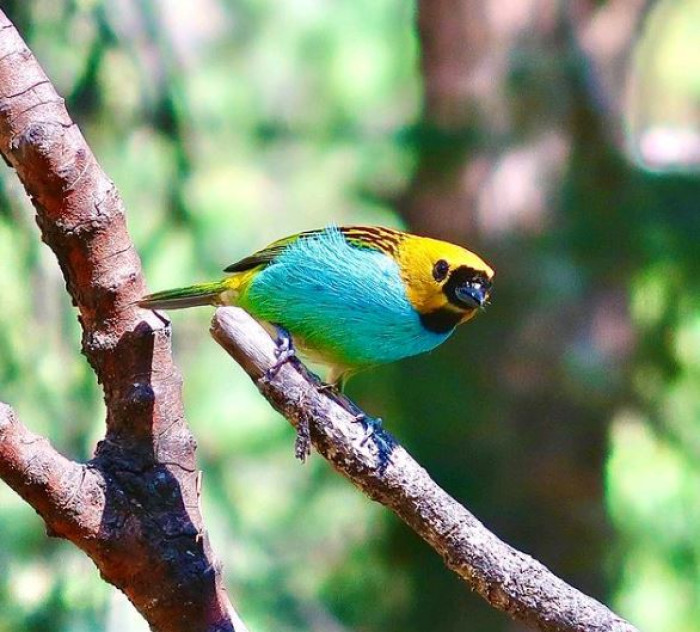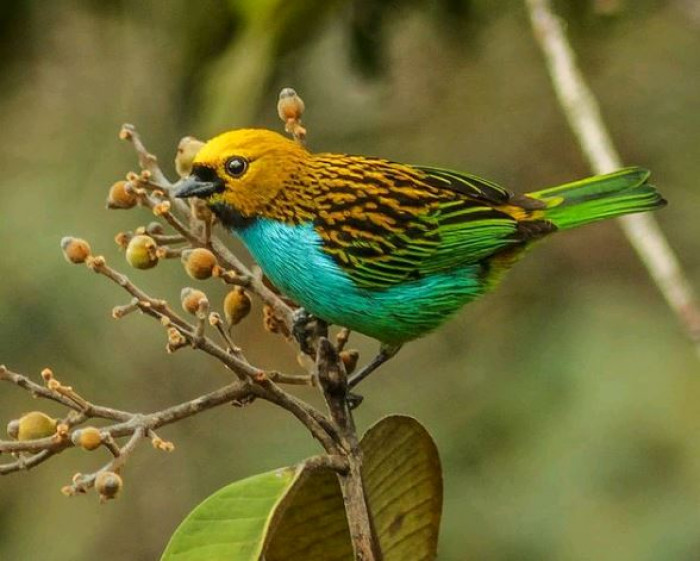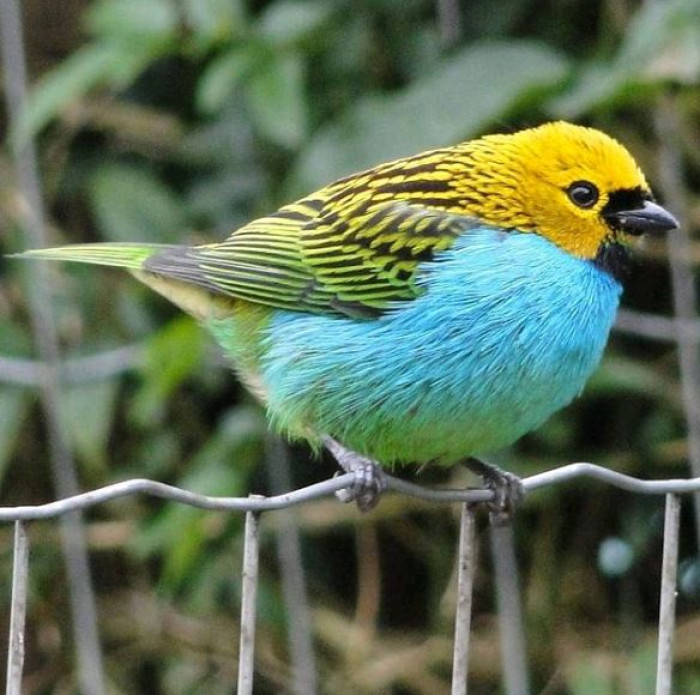
The Gilt-Edged Tanager Is A Stunning Little Bird In Iridescent Yellow, Blue, And Gilt-Edged Gold
This magnificent little bird features iridescent pastel shades of yellow, blue, and gilt-edged gold.

The Gilt-edged Tanagers is a member of the genus Tanager. It is a locally common bird that occurs in the Atlantic Forest.
Atlantic forest Is one of the world's most endangered biomes in the world. Even though birds have always piqued the curiosity of both youngsters and adults, the Gilt-edged Tanager stands out in particular because of its brilliant yellow and blue coloring.
The Gilt-edged Tanager is a beautiful bird that has a strong ability to draw people in. It possesses an enticing characteristic that draws in and captivates its target audience.
In the mornings, it is frequently spotted perched on trees, singing its heart out. Gilt-edged Tanagers prefer to perch high up in the treetops to hunt for insects.
Fruits and berries, on the other hand, make up the majority of their diet. This bird makes magnificent flowing notes in a variety of melodies, and it repeats refrains with increasing loudness and speed.
One cannot but notice it when one considers all of the great qualities! The call and song of this bird are made up of a series of sharp, short notes and quick trills, which are repeated frequently.
They are commonly encountered in couples or small groups, and they regularly congregate with other species in mixed-species flocks.
Meet the Gilt-edged Tanger
A little, vividly colored bird with iridescent pastel tones of yellow and blue scattered all over it!
 Instagram/rafaelmaffessa
Instagram/rafaelmaffessa
His chest and belly are a shimmering blue, while his wings and tail are a brilliant olive green.
The gilt-edged tanager (Tangara cyanoventris) belongs to the Thraupidae family of birds. With his unstreaked bright yellow head, the male of this species is easy to distinguish.
He also has a brilliant yellow back with strong streaks, a black forehead, and a black neck.
 Instagram/saguidaserra
Instagram/saguidaserra
Females have a similar appearance to males, but are not often as vividly colored.
This striking bird is only seen in Brazil and is native to the country.
 Instagram/maritacasnajanela
Instagram/maritacasnajanelaYellow and black are the colors of the wings.
The high tree canopy of lowland evergreen and secondary wooded regions is where these birds like to live and feed.
 Instagram/danilomotafotos
Instagram/danilomotafotos
It may be found on the borders of bushes and hedges as well as in the middle of them.
The Gilt-edged Tanager spends much of its time searching for insects in the high canopy. However, fruit and berries are the mainstays of their diet.
 Instagram/fredericopereiraeco
Instagram/fredericopereiraecoA pair of Gilt-Edged Tanagers
The female constructs a well-hidden cup nest in which she lays two brown or lilac-speckled white eggs. In 13–14 days, the eggs hatch, and the chicks fledge in 15–16 days. Insects and fruit are fed to the nestlings by both the male and mother.
Young birds from earlier broods have been seen assisting the mated pair at their nest throughout the mating season.
 Instagram/marcusvromero
Instagram/marcusvromero
It loves to remain high in the trees
A high-pitched "psi" is the call.
 Instagram/mariane_mineiro
Instagram/mariane_mineiro
They can easily spend hours perching on a tree
This species is not considered endangered since it has a vast range and a stable population trend. However, the Atlantic Forest's habitat is becoming increasingly fragmented, and the majority of the population lives on protected property.
 Instagram/rebekahdesson
Instagram/rebekahdesson
The Gilt-edged Tanager Is one of the most beautiful birds in Brazil, and its yellow and blue coloring distinguishes it from other birds. Because of its wonderful color combination, it is easily recognizable from other birds.
They are also quite active throughout the day, making them a popular tourist attraction in Brazil.
Paul







